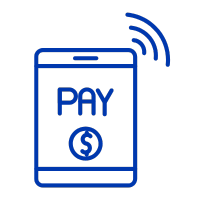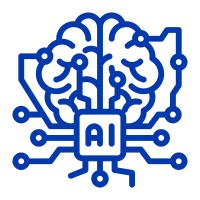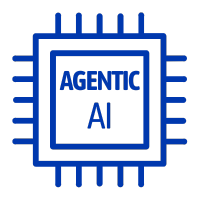A Digital Twin is a virtual model of a physical object, process, or system that is used to simulate, predict, and optimize performance through real-time data and advanced analytics. It enables organizations to improve efficiency, anticipate problems before they occur, and develop strategies for grounded decision-making, leveraging a continuous flow of data to mirror real-world conditions.
Key Benefits
– Operational Improvement: Digital Twin technology enhances operational efficiency by providing real-time visualization and simulation of processes, enabling proactive decision-making and optimization of workflows.
– Predictive Maintenance: By mirroring physical systems in real-time, Digital Twins facilitate predictive maintenance. This allows companies to foresee equipment failures before they occur, reducing downtime and maintenance costs.
– Resource Optimization: The precise modeling capabilities of Digital Twins lead to optimized use of resources such as energy and materials, contributing to cost savings and environmental benefits.
– Enhanced Product Development: Digital Twins allow for virtual testing and iteration of product designs, greatly accelerating the development process while reducing the need for physical prototypes.
– Risk Management: By simulating complex systems and scenarios, Digital Twins help organizations anticipate and mitigate risks, improving safety and reliability in operations.
Related Terms
– Operational Improvement: Digital Twin technology enhances operational efficiency by providing real-time visualization and simulation of processes, enabling proactive decision-making and optimization of workflows.
– Predictive Maintenance: By mirroring physical systems in real-time, Digital Twins facilitate predictive maintenance. This allows companies to foresee equipment failures before they occur, reducing downtime and maintenance costs.
– Resource Optimization: The precise modeling capabilities of Digital Twins lead to optimized use of resources such as energy and materials, contributing to cost savings and environmental benefits.
– Enhanced Product Development: Digital Twins allow for virtual testing and iteration of product designs, greatly accelerating the development process while reducing the need for physical prototypes.
– Risk Management: By simulating complex systems and scenarios, Digital Twins help organizations anticipate and mitigate risks, improving safety and reliability in operations.
References
For further insights into these processes, explore Zycus’ dedicated resources related to Digital Twin:
- Unlocking the Future: How Digital Twins are Revolutionizing Procurement and Supplier Management
- Resolving the Conflict Minerals Controversy – Part 3
- What is the Pulse of Procurement in 2014?
- Reduce Financial Risk through smart identification of Force Majeure clause
- Control Supplier Risk and Stay Ahead with Zycus iRisk
White Papers
Master the UK Procurement Act 2023: Ensure Compliance & Drive Procurement Excellence

Filter by
Compliant Invoicing
Compliant Invoicing refers to the process of generating, submitting, and managing invoices in adherence with legal, regulatory, and contractual requirements.
Continuity Plan
A Continuity Plan is an organized set of policies and procedures designed to ensure that a company’s essential operations can
Cost Modeling
Cost Modeling in procurement refers to the analysis and estimation of the total cost of ownership of a product or
Contract Audit
Contract Audit is a systematic evaluation of agreements and related documentation to ensure compliance with contractual terms, identify discrepancies, and
Procurement Cycle
The Procurement Cycle refers to the end-to-end process through which an organization identifies its needs, sources suppliers, negotiates contracts, places
Procurement Master Data Management
Procurement Master Data Management is the disciplined approach to managing core, consistent procurement information, including supplier, product, and contract data,






















































